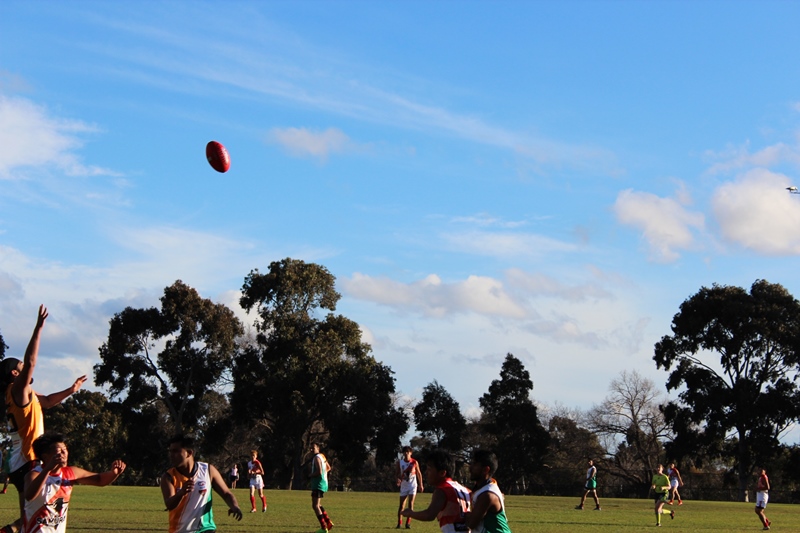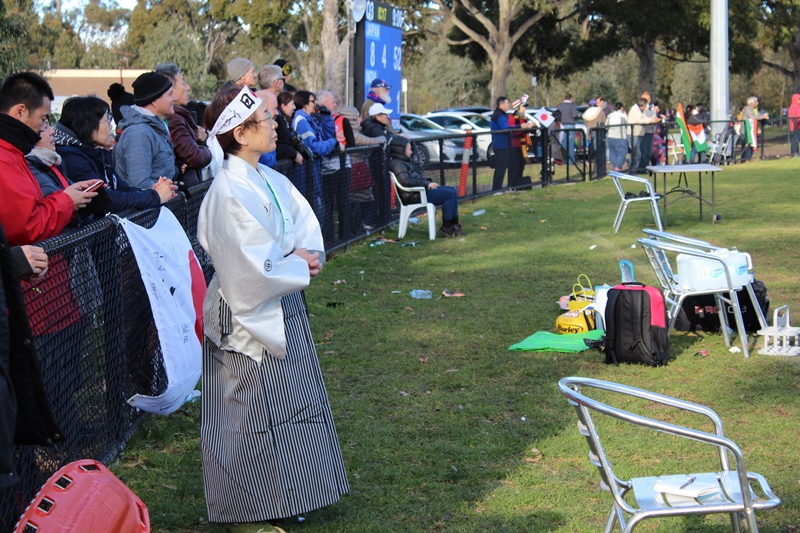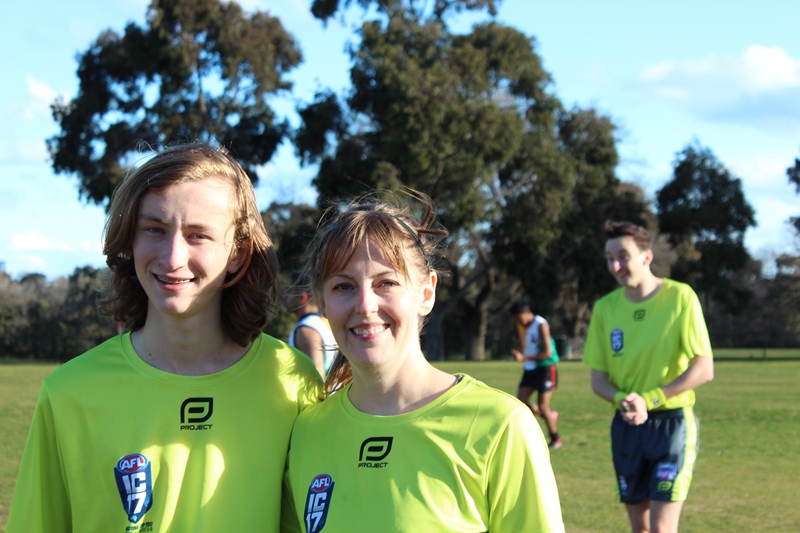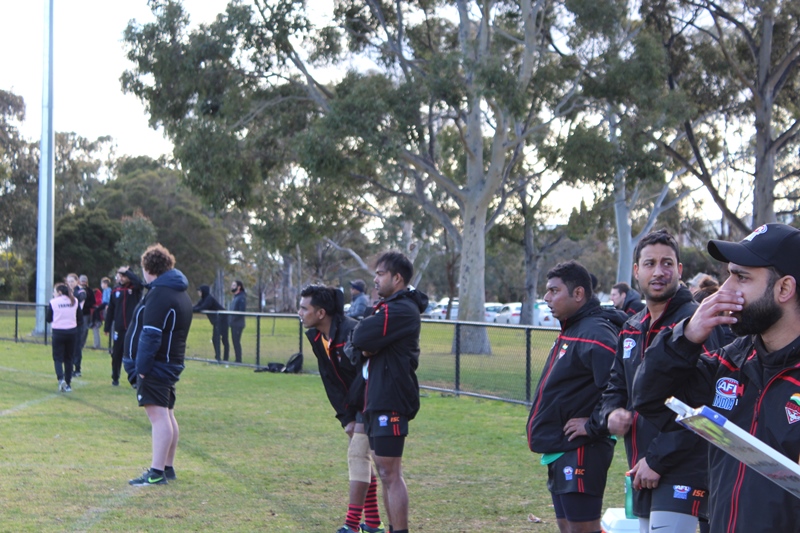Well drilled Samurai slash India's Tigers from seven states
- Monday, August 07 2017 @ 11:54 am ACST
- Contributed by: Stephen Alomes
- Views: 3,499

By Stephen Alomes
If you like watching an exhibition of skilled team football, when the sun came out on Western Oval on Sunday afternoon the Japan Samurai provided everyone’s cup of green tea.
Often outgunned in the past by bigger and stronger teams, with their running game fading away in the last quarter in previous International Cups, the Samurai have finally drilled their game to perfection as well as facing the less intense competition in the new Division 2.
 And the Big Men Fly
And the Big Men FlyComing from the oldest Australian Football competition in the non-English speaking world, formed in the late 1980s, the young Japanese team had a high level of footy skills.
Tokyo’s 40 million population is much less than that of the seven states of India from which the Indian team was drawn. However, the dispersed Indian team, even with 12 players in Australia, lacked the opportunities to train together long enough to develop a team game.
 Formal Support for Japan
Formal Support for JapanKerala is a train journey of 40 hours from Mumbai and other players in Maharashtra in the far west of India, a mere thirty hours away, and Chennai is in the south. Despite geography, the Indian achievement in developing footy under the leadership of Sudip Chakraborty is a beginning.
The Indian footy development in seven of India’s 28 states has been strengthened through regular visits from Golden Square in the Bendigo League and a more recent connection with Essendon, which also saw Kevin Sheedy participate in the selection of the national team for IC17.
However, development alone did not translate into an effective IC team on Western Oval.
And Japan actually had more tall players than the Indians, as another cliché falls.
An opening blast of five goals in the first quarter was achieved by Japan’s running game, play-on football, low passes against the wind and accurate kicking, while India hardly troubled the scoreboard, with just one point.
Perhaps that was fortunate in some ways. Like players, and like umpires, the scorers and the scoreboard can make mistakes. The brilliant brightly coloured scoreboard crashed several times in the game, and some score revisions were necessary as well.
More positively, the umpiring had a strong trans-Pacific presence with central umpire Laurie Rupe from Minneapolis and two American boundary umpires.
 Three US Umpires - Central and boundary pictured.
Three US Umpires - Central and boundary pictured. Japan was ably led by onballer Michito Sakaki, in his fifth International Cup, a former winner of player of the tournament, while Shoki Mukodaka (4) and Kyo Nakagawa (3) were multiple goal scorers.
The real Japanese dominance came from weeks of drilling in Tokyo supported by the master coaching on Sunday of Brett Qualtrough, while the Indians, although selected by a team including Kevin Sheedy, struggled against the speed of Japanese ball movement.
India was weakened by the absence of captain Sudip Chakraborty, and soon had a depleted bench. Even as they had some success in the last half in reining in the Japanese outside players, they made little impact on the scoreboard themselves. India had more contested possessions as the game went on, with Sudip Rajbanshi, Karanbir Singh and Amal Dev putting up stout resistance, but had neither the effective disposal nor the system to kick goals.
 India's depleted bench.
India's depleted bench.Next Saturday, when Japanese running and disposal takes on German key position power at North Box Hill’s Elgar Park, we may see a new version of the footy puzzle. Not scissors, paper, stone, but speed vs size.
SCORES
JAPAN 5.1 6.4 10.5 13.7 (85)
INDIA 0.1 0.1 0.1 0.2 (2)
INDIA 0.1 0.1 0.1 0.2 (2)
JAPAN
Goal Kickers: K. Nakagawa 4, S. Mukodaka 3, Y. Yamaji 2, H. Oura 2, R. Sato, M. Sakaki
Best Players: H. Oura, M. Sakaki, K. Takahashi, H. Kuroda, Y. Yamamoto, S. Mukodaka
INDIA
Best Players: S. Rajbanshi, K. Singh, A. Dev, M. Tirkey, A. Gk, A. Kalia
[youtube:x-6OZzUWBck&]


 RSS news
RSS news Twitter
Twitter Facebook
Facebook